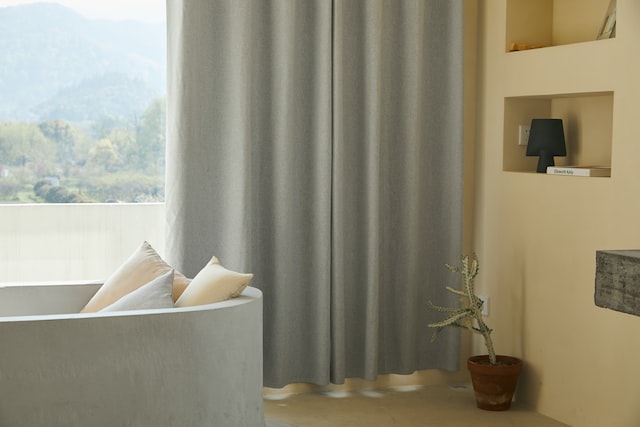Many people don’t think about outdoor curtain tie backs and holdbacks, but they’re essential if you want to keep your curtains looking great and in place over time. When the wind blows, or you open and close your curtains.
They can begin to swing back and forth on their own, potentially creating wear and tear on the curtains and even damaging them in the long run by making them fray or coming apart at the seams.
What are curtain tiebacks and holdbacks?
Curtain tiebacks and holdbacks are two different ways to tie back curtains. They serve the same purpose to keep the curtains from blowing in the wind or getting in the way. Curtain tiebacks and holdbacks can be used for decorative and functional purposes.
Holdbacks are usually made of metal or plastic and hook onto the wall or window frame. There are many ways to tie back curtains, but the most common way is to use a bow. To make a bow, take two pieces of fabric or rope and tie them together in the middle.
Styles
If you’re looking for a stylish way to tie back your curtain, try a tieback with a dainty design. A simple knot will do the trick, and you can choose from various materials, including lace, fabric, and cord.
You can also go for a more intricate design if you have the time and patience to create it yourself. Whichever option you choose, make sure the finished product looks neat.
Sizes
Here are some general guidelines:
- For light curtains: Use tiebacks that are about 2 inches in diameter.
- For medium-weight curtains: use tiebacks 3 to 4 inches in diameter.
- For heavy curtains: Use tiebacks 6 inches or more in diameter.
Installation
Here are five tips for installing a tieback:
1. Measure the distance from the top of the curtain rod to the top of the curtain. It will give you the size of tieback you’ll need.
2. Cut the tieback to this size using a pair of scissors or a sharp knife. Make sure to cut it evenly on both sides.
3. Insert the tieback into the curtain rod by pushing it down against the curve of the rod until it snaps into place.
4. Pull up on the string to tighten the tieback, and trim any excess string with scissors or a knife.
5. Enjoy your new colourful and dramatic curtains.
Fabrics
Remember a few things to remember when choosing the right fabric for your tiebacks and holdbacks.
- First, you’ll want to decide if you want a light or heavy fabric.
- Light fabrics like sheer cotton voile will let in more light, while heavier fabrics like velvet block out lighter.
- Next, you’ll want to think about the colour and pattern of the fabric. If you want your tiebacks and holdbacks to blend in with your curtains, choose a fabric that is similar in colour.
Importance of Proper Installation for Curtain Tiebacks and Holdbacks
Many people don’t think about outdoor curtain tie backs and holdbacks, but they’re essential if you want to keep your curtains looking great and in place over time. When the wind blows, or you open and close your curtains, they can begin to swing back and forth on their own, potentially creating wear and tear on the curtains and even damaging them in the long run by making them fray or come apart at the seams. Proper installation of tiebacks and holdbacks not only ensures their functionality but also enhances the longevity of your curtains, preventing unnecessary damage. Let’s delve into the significance of correctly installing these accessories to maintain the aesthetic appeal and structural integrity of your window treatments.
Conclusion
Whether you’re looking for a way to add a touch of elegance to your home décor or need a functional solution for holding back curtains, tiebacks and holdbacks are a great option. With so many different styles available, it’s easy to find the perfect option for your space. Installation is quick and easy so you can enjoy your new curtain tiebacks or holdbacks in no time.
Apart from that if you want to know about Roller Blinds & Sheer Curtains then please visit our Home Improvement category
